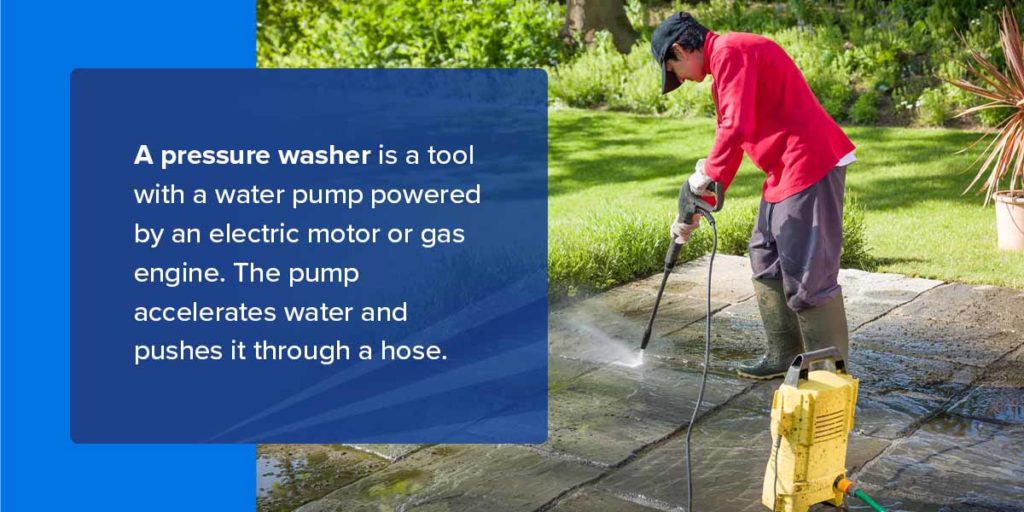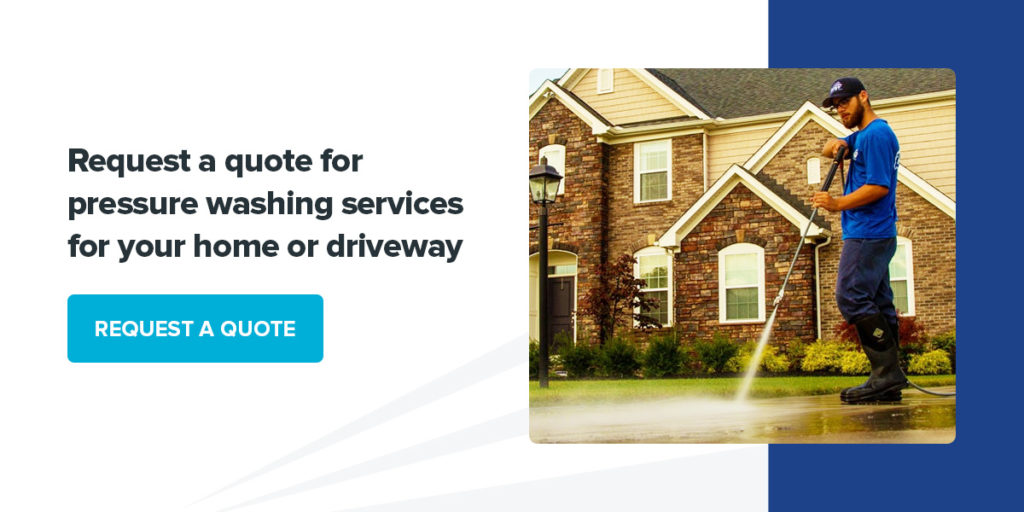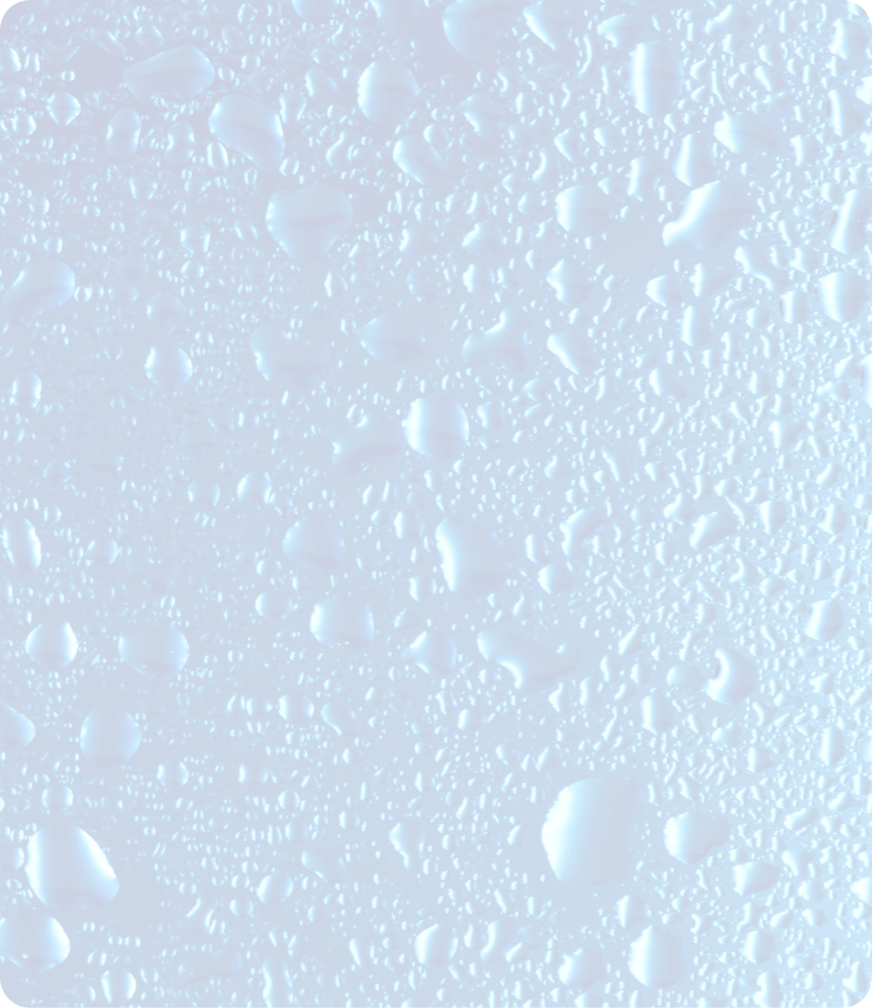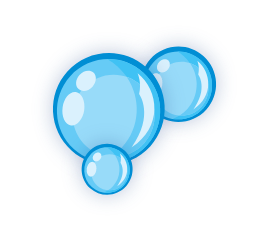What is power washing? Power washing is the act of using pressurized water to clean dirt, algae, and other contaminants from outdoor surfaces. A power washer, otherwise known as a pressure washer, is the powered machine that makes cleaning the surface possible. Methods can vary depending on the machine being used, the surface that’s being cleaned, and the person performing the work.
In this post, we will further define power washing and the common methods used to clean surfaces. Read on to learn about the differences between power washing and pressure washing, and why high-pressure and soft washing are used in different circumstances.
Defining Power Washing vs. Pressure Washing
A few articles on the web make the distinction that power washing involves the use of hot water, and pressure washing does not. The truth, however, is the name alone is less telling than that. In practical use, the terms “power washing” and “pressure washing” are interchangeable.
For example, our company name is “Perfect Power Wash.” We use the word “power” to avoid the impression that we favor high-pressure washing over soft washing. We feel “power” encapsulates both terms into one. In short, we don’t solely use high pressure or soft washing methods. We use the safest, most effective methods to clean the surface at hand, so we are Perfect Power Wash.
High-Pressure Washing Examples
Concrete is a durable surface that requires using a higher amount of pressure. Because concrete is porous, contaminants soak into the surface of the concrete, requiring a good amount of pressure to properly flush them out.
Another instance where pressure can be beneficial is in preparing to repaint or reseal your deck. With the proper amount of pressure, a lot of loose paint and sunspots can be taken off by pressure washing. With that said, too much pressure on a deck can be devastating, so it’s critical to have the knowledge and experience to find that sweet spot.
Soft Washing Examples
A soft wash uses a lower amount of water pressure, relying on cleansers and a soft bristle brush to clean the tougher areas. Soft washing is the best method for siding, with the exact amount of pressure varying by the type of siding on your home.
The best example of soft washing is when cleaning a roof. Asphalt shingles are delicate and require little to no pressure. The cleansers do most of the work when removing black streaks, algae, and more.
Power Washing vs. Jet Washing
Power washing and jet washing have one main difference — water temperature. A jet wash uses heated water with high pressure to remove tough grime, including salt, grease and mildew. It’s the preferred option for heavily soiled spaces and works well on hard surfaces, such as cement or concrete.
Other materials benefit from an unheated power wash instead so the surfaces remain fully protected throughout the cleanse. This method can work well on many materials, such as wood, composite, PVC, vinyl, aluminum and concrete. The proper pressure of equipment with skillful use can get to those hard-to-reach places, like edges and grooves, for a pristine and restored appearance.
Why Power Wash?
As opposed to scrubbing an exterior surface by hand, power (or pressure) washing is a faster, more effective way to clean. Cleansers treat the surface for the typical contaminants like dirt, grime, algae, mold, and mildew. Afterward, a safe yet appropriate amount of pressure is used to rinse everything away. Pressure should never be the sole method of lifting buildup from stubborn areas. A soft bristle brush should be used if there are any spots that won’t come up.

How Does Power Washing Work?
For scientific reasons, water works wonders when removing a stain or spot. The water molecules have positive and negative charges, so they stick to things easily. Adding soap chemicals can help the water break down grime. Power washing takes your solution to the next level to remove imperfections or help you explore a more efficient approach.
A pressure washer is a tool with a water pump powered by an electric motor or gas engine. The pump accelerates water and pushes it through a hose. A narrow jet of water travels to the surface you’re cleaning with high kinetic energy, removing dirt and dust. While the machine works, a filter prevents debris from entering the system. This setup ensures you’re able to spray a surface with clean water.
The attachments at the end of the hose control the amount of pressure the machine provides. It’s important to use suitable pressure to clean safely and protect a surface from damage. Additionally, the nozzles can control a narrow or wide spray or produce different motions. For example, a spinning wand or a rotating brush can add additional scrubbing power to break down tough dirt and grime.
Knowledgeable and experienced professionals can use the right equipment and settings to achieve the best results for you. Depending on your home, regularly scheduled services seasonally or at least once a year offer an excellent way to keep your home exterior looking ideal all year round.
How Perfect Power Wash Cleans
Now, when someone asks “What is power washing?”, you will have the answer. At Perfect Power Wash, our professional technicians clean exterior surfaces by always using a safe amount of pressure while allowing the cleansers to do most of the work. No surface is the same as the next, and we calibrate the pressure we use for the surface we are cleaning. With over 300,000 jobs completed, we have the experience to perform a safe and effective job every time.
Learn more about the benefits of power washing your home or contact us today to get a free quote!




